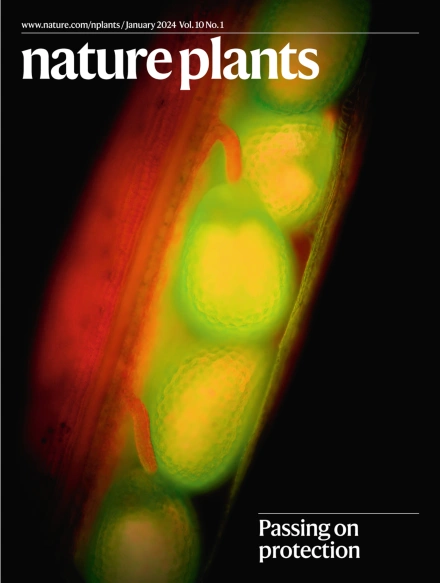单细胞水稻图谱整合了多物种数据,揭示了顺式调控进化。
IF 13.6
1区 生物学
Q1 PLANT SCIENCES
引用次数: 0
摘要
顺式调控元件(cre)是调控基因表达的重要分子,但其在植物中的进化动力学尚不清楚。在这里,我们构建了一个水稻单细胞染色质接近图谱,来自9个器官的103,911个细胞核,代表126个细胞状态。对玉米(Zea mays)、双色高粱(Sorghum bicolor)、千穗草(Panicum milium)和褐藻(Urochloa fusca)等4种禾草的57,552个细胞核进行比较基因组学分析,发现其染色质可及性保护随细胞类型的特异性而变化。与其他细胞类型相比,水稻叶片表皮可达染色质区域的保守性较低,表明水稻l1源性表皮层的调控进化相对于其他物种加快。与抑制性组蛋白修饰H3K27me3重叠的保守可接近染色质区域被鉴定为潜在的沉默样cre,因为删除这些区域会导致基因表达上调。本研究为水稻群落提供了一个全面的表观基因组资源,展示了比较基因组学方法的实用性,该方法突出了植物细胞类型特异性CRE进化的动态。本文章由计算机程序翻译,如有差异,请以英文原文为准。
A single-cell rice atlas integrates multi-species data to reveal cis-regulatory evolution.
Cis-regulatory elements (CREs) are essential for regulating gene expression, yet their evolutionary dynamics in plants remain elusive. Here we constructed a single-cell chromatin accessibility atlas for Oryza sativa from 103,911 nuclei representing 126 cell states across nine organs. Comparative genomics between O. sativa and 57,552 nuclei from four additional grass species (Zea mays, Sorghum bicolor, Panicum miliaceum and Urochloa fusca) revealed that chromatin accessibility conservation varies with cell-type specificity. Epidermal accessible chromatin regions in the leaf were less conserved compared to other cell types, indicating accelerated regulatory evolution in the L1-derived epidermal layer of O. sativa relative to other species. Conserved accessible chromatin regions overlapping the repressive histone modification H3K27me3 were identified as potentially silencer-like CREs, as deleting these regions led to up-regulation of gene expression. This study provides a comprehensive epigenomic resource for the rice community, demonstrating the utility of a comparative genomics approach that highlights the dynamics of plant cell-type-specific CRE evolution.
求助全文
通过发布文献求助,成功后即可免费获取论文全文。
去求助
来源期刊

Nature Plants
PLANT SCIENCES-
CiteScore
25.30
自引率
2.20%
发文量
196
期刊介绍:
Nature Plants is an online-only, monthly journal publishing the best research on plants — from their evolution, development, metabolism and environmental interactions to their societal significance.
 求助内容:
求助内容: 应助结果提醒方式:
应助结果提醒方式:


